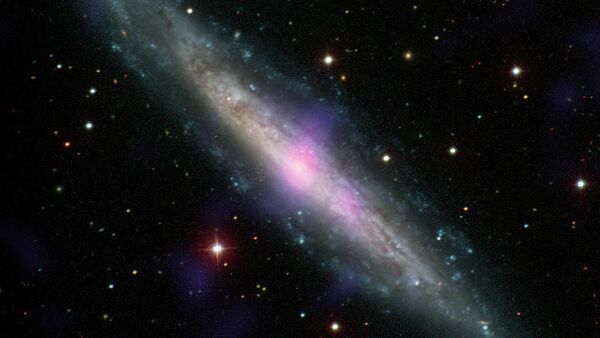NEW DELHI (Sputnik) — Indian astronomers have come up with a precise measurement of X-ray polarization of the Crab Pulsar in the Taurus constellation.
READ MORE: Hamburg's X-Ray Laser So Powerful Can See 'How Molecules Make Energy From Light'
The measurement was derived from a 18-month-long task undertaken by the first dedicated multi-wavelength space observatory Astrosat of the Indian Space Research Organization (ISRO). A pulsar is a rotating star or white dwarf, which emits electromagnetic radiation due to its extremely strong gravitational and magnetic fields, both approximately a trillion times stronger that on Earth.
Many studies on various properties of such radiation have been done to piece together a complete picture of compact objects and their immediate surroundings, but information regarding the elusive properties of the radiation or X-rays remains missing.
The measurement of high-energy polarization that produces the X-rays was so difficult that there has been no reliable measurement apart from the first taken by the Chinese in AD 1054 during a supernova explosion.
READ MORE: NASA, Italian Space Agency Shake Hands on Cosmic X-Ray Exploration Project
"They are known to be sources of intense X-ray radiation, electromagnetic waves similar to light but having ten to hundred thousand times higher energy, which carries vital clues to understand them as well as the physical processes responsible for the radiation," the Inter-University Centre for Astronomy and Astrophysics (IUCAA) said in a statement.
The Indian astronomers used an Astrosat satellite consisting of 16,384 tiny pixels, essentially independent detectors, to measure X-rays coming from the celestial objects. The
measurements have, for the first time, enabled the study of polarization at different rotation phases of the pulsar.
"The idea of using pixelated CZT detectors for X-ray polarization measurement has been around for a while, but this is for the first time that this idea was tested on ground before launch and then employed in space. This makes our measurements much more credible," professor Santosh Vadawale of PRL Ahmedabad, the lead author of the paper, said.
It has been observed that the polarization varies most in the off-pulse duration when no contribution from the pulsar is expected, which poses a serious challenge to most of the current theories of how this object produces X-rays.
READ MORE: China Launches X-Ray Telescope to Shed New Light on Black Holes, Neutron Stars
"Most theories predict that the polarization of X-ray radiation will show changes during the emission of a pulse, but not at other times. So what does the team make of the surprising observation by CZTI of a sharp change of polarization in the 'off pulse' region? This is a big challenge to theorists", professor Dipankar Bhattacharya of Pune's IUCAA said. "It tells us that the pulsar emission extends into what was thought to be an off pulse region," he added.
Scientists and astronomers, who participated in the project, come from India's top research institutes such as the Mumbai-based Tata Institute of Fundamental Research, the Thiruvananthapuram-based Vikram Sarabhai Space Centre, the ISRO Satellite Centre in Bengaluru, Pune's Inter-University Centre for Astronomy and Astrophysics and the Ahmedabad-based Physical Research Laboratory (PRL).




